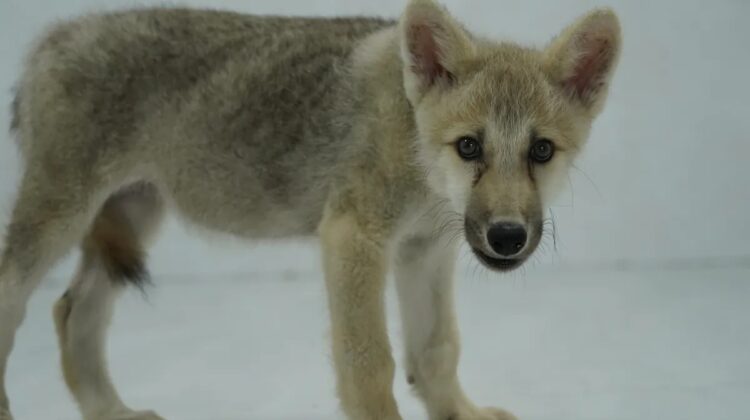
After decades of trials, a Chinese biotech company has succeeded in cloning an Arctic wolf for the first time. This is monumental in a variety of ways.
To begin with, cloning even a small animal like the wolf is a significant step forward in STEM research. Second, the success of cloning an animal may indicate that other endangered animals will have a new lease on life. The female cloned Arctic wolf has been named ‘Maya.’ She was born on June 10th in a Beijing research facility. However, the company took its time before announcing its developments to the media.
According to Sinogene Biotechnologies, the company behind this development, the wolf pup is happy and healthy.
Scientists cloned this Arctic wolf after extracting DNA from the skin of another wolf that lived in Harbin Polarland. For those who are unaware, this is a contentious Chinese amusement park that also houses Polar bears. The DNA was then inserted into the egg cell of a female dog in heat, and they were successful in finding a denucleated egg cell. Following this, scientists designated a beagle as a surrogate mother, with the embryo gestating in the womb until birth.
SINOGENE TECHNOLOGIES HAS CLONED AN ARCTIC WOLF, THE FIRST OF MANY SUCCESSES.
The entire procedure is known as somatic cell nuclear transfer. This is the same procedure that resulted in the cloning of Dolly the Sheep in 1996. Since that monumental scientific breakthrough, several other mammal species have gone through the cloning process over the years. Deer, cat, dog, mule, horse, ox, rat, and rabbit are among the animals to be cloned. This method was also used to clone an ibex, also known as the bucardo. Surprisingly, this remains the only instance of an extinct animal being resurrected. Unfortunately, the Ibex did not live for long.

Following the success of cloning the first Arctic wolf, the biotech company plans to clone another wolf. Mi Jidong, the General Manager of Sinogene, stated that this development was a result of their research collaboration with Harbin Polarland. It was also their ground-breaking attempt to protect both endangered and wild animals. The project took two years to complete, but the company should be proud of itself for a job well done.
The Arctic wolf is a subspecies of the well-known grey wolf. This animal, which has been featured in shows such as Game of Thrones, is typically found in northern Canada’s tundra region. This wolf is much smaller than the other wolf varieties. It also has white fur, a narrower skull, and is very good at hiding in the snow.
Image Credits: Sinogene

Now they have another animal to eat.
I agree with your point of view, your article has given me a lot of help and benefited me a lot. Thanks. Hope you continue to write such excellent articles.